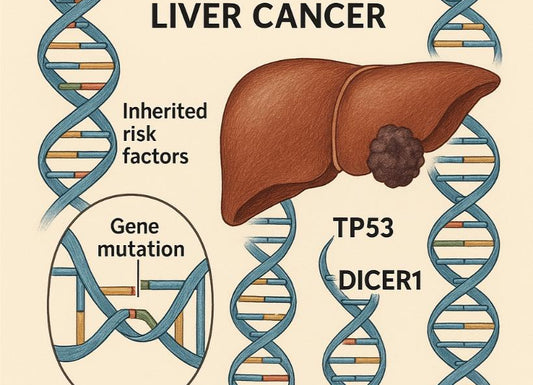Is F3 Liver Fibrosis Reversible?
 Written By
Yusela Aquino
Written By
Yusela Aquino

F3 liver fibrosis represents an advanced stage of liver scarring, characterized by significant fibrosis that precedes cirrhosis. The potential for reversing F3 fibrosis is influenced by factors like the underlying cause, the extent of liver damage, and the timeliness of intervention. While it is challenging to achieve complete reversal at this stage, proactive measures can stop its progression and, in some cases, lead to partial regression of the excessive scarring.
Understanding F3 Liver Fibrosis
Liver fibrosis happens when persistent liver damage causes scar tissue to replace healthy liver cells. These injuries may be often due to conditions like fatty liver disease, hepatitis, or excessive alcohol use. The process of scarring (fibrosis) occurs in stages, and F3 is a stage of the METAVIR scoring system. Fibrosis stages are from F0 (no fibrosis) to F4 (cirrhosis). F3 liver fibrosis is an advanced stage, which means that scar tissue is widespread but hasn’t yet caused full-blown cirrhosis. This stage can still be partially reversible, but only with aggressive treatment and lifestyle changes.
What makes F3 different from earlier stages is the extent of fibrosis and its impact on liver function. At this point, liver stiffness is significantly increased, making blood flow more difficult. This can lead to complications like portal hypertension and an increased risk of liver failure if left unchecked. However, there’s still hope! With the right interventions, some of this damage can be reversed, and progression to cirrhosis can be prevented.
Can Stage 3 Liver Fibrosis Be Reversed?

The idea of "reversing" fibrosis can be tricky because it depends on several factors. The liver does have regenerative abilities, but the extent of healing depends on how much scar tissue has formed, what caused the fibrosis, and how soon treatment begins. If the underlying cause—whether it's alcohol, fatty liver disease, or hepatitis—is effectively treated, the liver can begin repairing itself.
However, reversing F3 fibrosis is more difficult than reversing earlier stages. At this point, scar tissue is denser and harder to break down. The goal is to stop further damage, reduce inflammation, and improve liver function. While some reversal is possible, it often requires a combination of medical treatment, diet, and lifestyle changes—which we’ll get into next!
F3 Liver Fibrosis Treatment Options
Medical treatments for F3 fibrosis focus on reducing liver inflammation, halting disease progression, and promoting liver cell regeneration. Doctors may prescribe medications to manage the underlying cause and suggest lifestyle changes to support healing.
A hepatologist (liver specialist) might recommend FibroScan tests, blood work, and imaging to monitor progression. Additionally, they can guide patients on nutritional interventions and medication choices. Regular liver function monitoring is essential because even minor improvements can greatly impact long-term health!
Caring for a Liver with Advanced Fibrosis

Believe it or not, your lifestyle choices can have a major impact on fibrosis progression. The liver is resilient, and when given the right conditions, it can heal itself—at least to some degree! The key is to remove stressors (like alcohol, fatty foods, and toxins) and provide the nutrients it needs to rebuild.
Natural approaches like antioxidant-rich foods, herbal supplements (milk thistle, turmeric), and intermittent fasting have shown promising results in liver health. Some studies suggest that weight loss in people with fatty liver disease can significantly reduce liver stiffness—proof that simple changes can make a huge difference!
Lifestyle Changes to Support Liver Healing
Exercise is one of the most powerful tools against liver fibrosis! Studies show that even moderate activity, like walking 30 minutes a day, can reduce liver fat, lower inflammation, and improve liver function. Strength training also helps regulate blood sugar and reduce fat buildup in the liver.
Sleep and stress management play a huge role too. Chronic stress increases inflammation, which can make fibrosis worse. Techniques like meditation, yoga, and deep breathing exercises can help lower cortisol levels and promote healing from within.
How to Track Progress and Monitor Liver Healing

Keeping track of liver health is crucial for making sure treatments are working. Doctors often use FibroScan tests, liver enzyme panels (ALT, AST), and imaging scans to monitor changes in fibrosis. These tests can show whether scarring is improving, staying the same, or getting worse.
At-home liver test kits, like Ribbon Checkup's urine test, can help track early signs of liver stress. While not a replacement for medical tests, they can provide valuable insight into your liver function and help you stay proactive in your health journey!
F3 Liver Fibrosis Life Expectancy
The outlook for F3 fibrosis depends on how well it’s managed. With proper treatment, many people live long, healthy lives without progressing to cirrhosis. However, if untreated, F3 fibrosis can advance to F4 (cirrhosis), which significantly increases health risks.
The best way to improve life expectancy is to treat the root cause, maintain a healthy lifestyle, and monitor liver function regularly. The sooner changes are made, the greater the chance of preventing irreversible damage!
Hope for F3 Liver Fibrosis Patients
A diagnosis of F3 liver fibrosis is not a death sentence! While it’s an advanced stage, there are many ways to stop progression and even promote healing. Whether through medications, natural remedies, or lifestyle changes, every small step counts toward better liver health.
If you’re feeling lost, start by tracking your liver health, talking to your doctor, and making small but impactful changes. Your liver is remarkable—give it the support it needs, and it can do amazing things!
References
Hernandez, P. (2023, July 17). Liver fibrosis: stages and treatment - Fundahigado America. Fundahigado America. https://fundahigadoamerica.org/en/news/2023/07/liver-fibrosis-stages-and-treatment
Kumar, R., Teo, E., How, C., Wong, T., & Ang, T. (2018). A practical clinical approach to liver fibrosis. Singapore Medical Journal, 59(12), 628–633. https://doi.org/10.11622/smedj.2018145
Soleimani, D., Ranjbar, G., Rezvani, R., Goshayeshi, L., Razmpour, F., & Nematy, M. (2019). Dietary patterns in relation to hepatic fibrosis among patients with nonalcoholic fatty liver disease. Diabetes Metabolic Syndrome and Obesity, Volume 12, 315–324. https://doi.org/10.2147/dmso.s198744
Suk, K. T. (2015). Staging of liver fibrosis or cirrhosis: The role of hepatic venous pressure gradient measurement. World Journal of Hepatology, 7(3), 607. https://doi.org/10.4254/wjh.v7.i3.607

Yusela is a medical student with a degree in Biology and a strong foundation in health communication. With experience in both research and clinical settings, she writes clear, evidence-informed content to help patients and caregivers better understand liver health, chronic disease, and transplant care.



